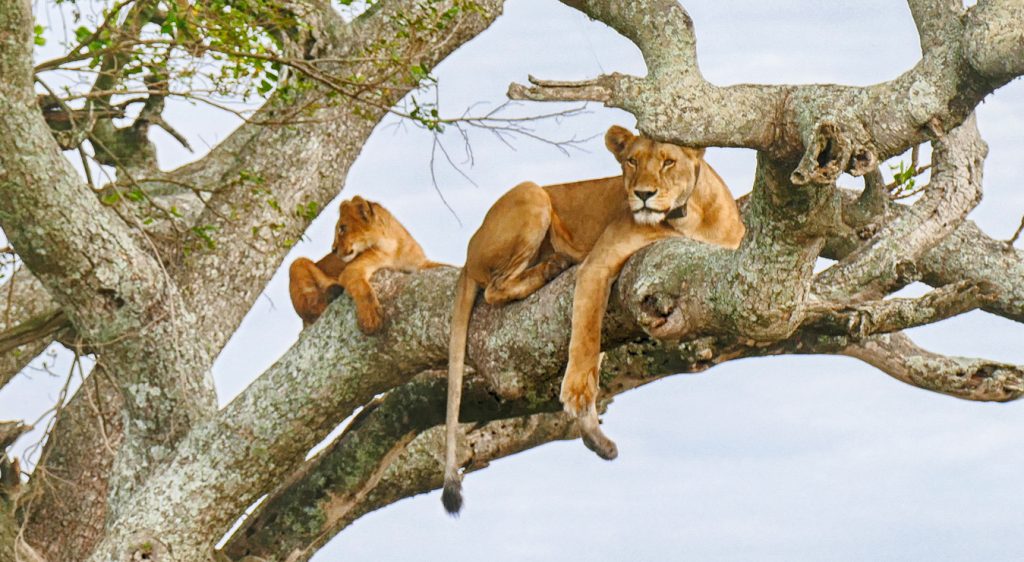
The Serengeti is best known for its huge herds
of plains animals (especially gnu [wildebeests], gazelles, and zebras. It’s the only place in Africa where vast land-animal migrations still take place. The park, an international tourist attraction, was added to the UNESCO World Heritage List in 1981.
Serengeti National Park hosts: over 70 species of large mammals including 2 million ungulates, 4000 lions, 1000 leopards, 550 cheetahs. Then there are over 500 bird species. The perpetual cycles of life play out in an area of about 15,000 square kilometers.
Royalty free images of Serengeti
Our itineraries & price quotes
The magic of Serengeti National Park
is impossible to describe in words (but we keep trying). First, the sounds – the humming grunts of wildebeest and the donkey-like barking of zebras. Our visit in November witnessed hundreds to thousands of these creatures, not the ‘millions’ described for the height of the return migration in May-July but remains massively impressive. A word often misused, this event is truly indescribable – masses of animals from horizon to horizon, all grazing their way forward. An occasional zebra faces backwards as if directing traffic.
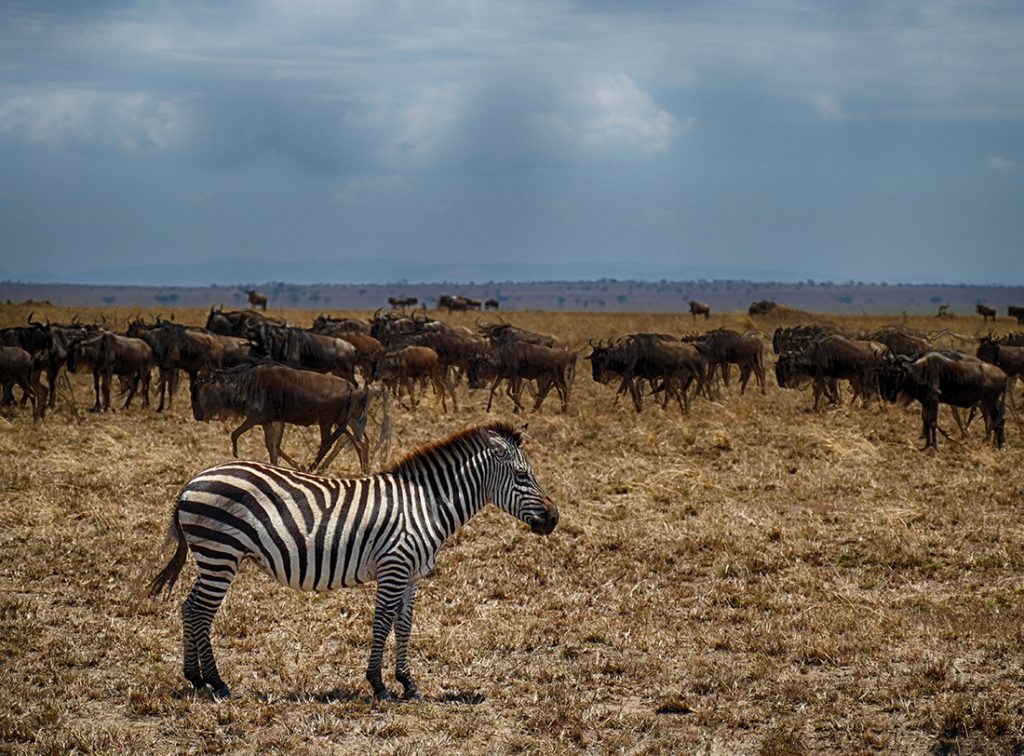
Sometimes the herds split around our vans as if we were just a large rock. The sedate pace is broken when one animal startles & sets off a small, brief chain reaction stampede.
The Great Migration
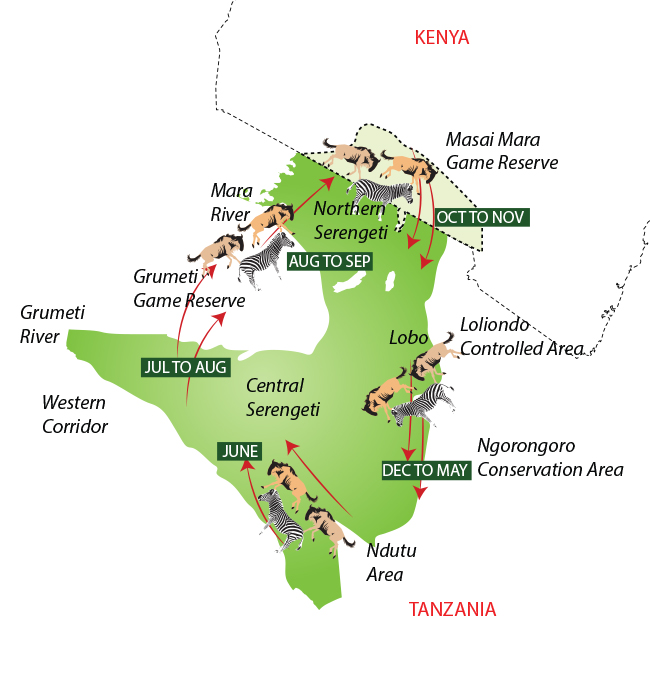
Each year the cyclical great wildebeest migration begins with calving in the Ngorongoro Conservation Area of the southern Serengeti in Tanzania. It loops clockwise through the Serengeti National Park and north towards the Maasai Mara reserve in Kenya. This migration is naturally caused by the availability of grazing. The initial phase lasts from about January to March, when the calving season begins – a time when there is plenty of rain-ripened grass available for the 260,000 zebras that accompany 2 million wildebeest with hundreds of thousands of other plains game, including around 470,000 gazelles (These numbers are of course rough estimates – there are no chimpanzee census takers counting the wildebeest as they pass by).
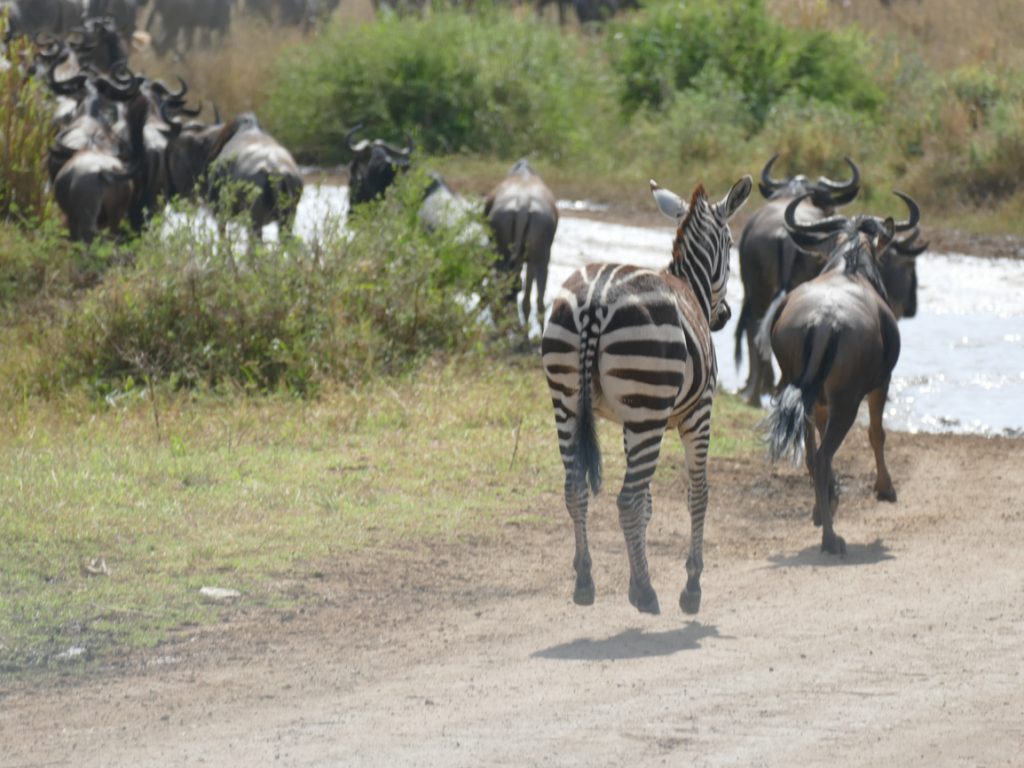
During February,
the wildebeest occupy the short grass plains of the southeast part of the ecosystem, grazing and giving birth to approximately 500,000 calves in 2 to 3 weeks. A few calves are born ahead of time. But hardly any survive. Very young calves are more noticeable to predators when mixed with older calves from the previous year. As the rains end in May, the animals start moving northwest into the areas around the Grumeti River. They typically remain until late June. The crossings of the Grumeti and Mara rivers begin in June – July are safari attraction because crocodiles are lying in wait. (Not for the faint-hearted)
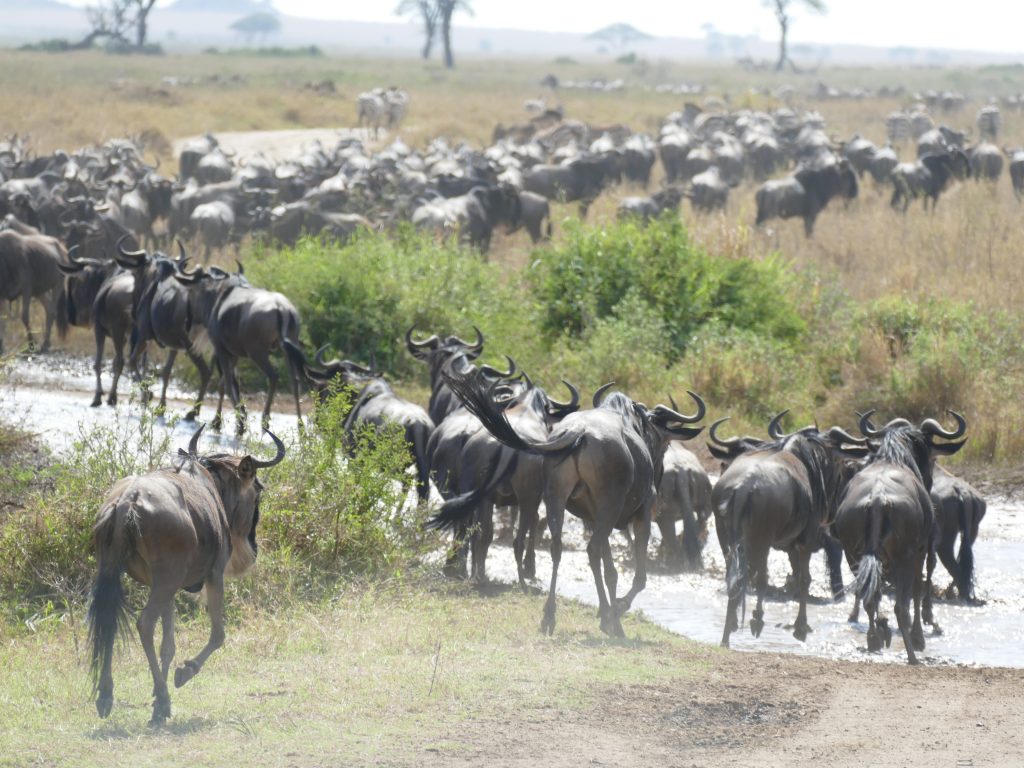
The herds arrive in Kenya in late July / August. They stay for the rest of the dry season. In early November with the start of the short rains (when we were on safari), the migration moves south again to Tanzania’s short grass plains of the southeast. They usual arrive in December in plenty of time for calving in February.
About 250,000 wildebeest die during the journey from Tanzania to the Maasai Mara National Reserve in southwestern Kenya. It totals 800 kilometers (500 mi). Death can be from thirst, hunger, exhaustion, or predation including by lions & cheetahs & leopards